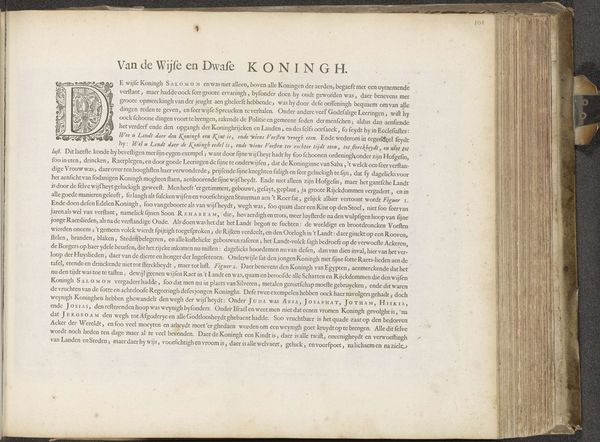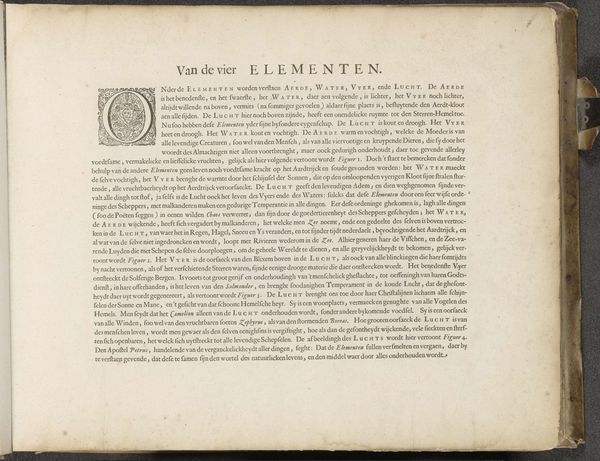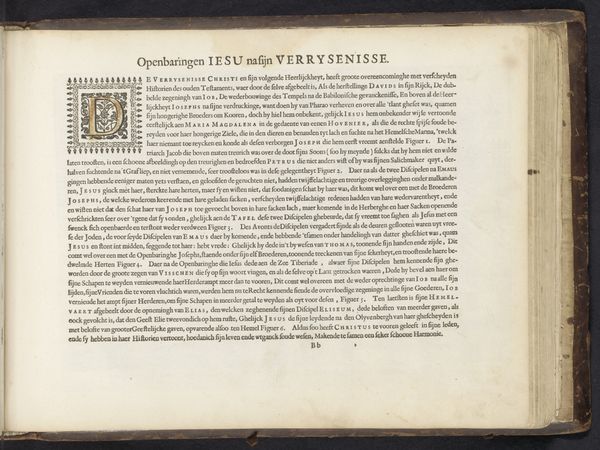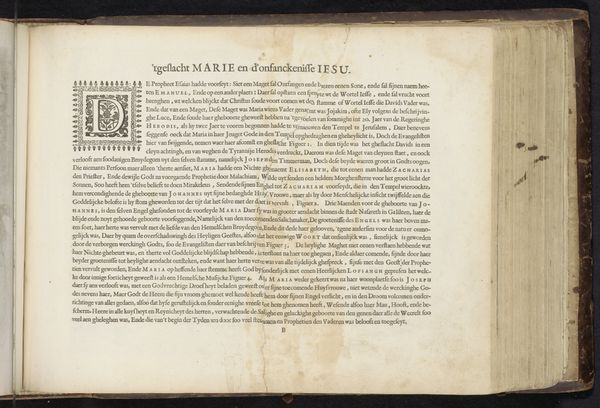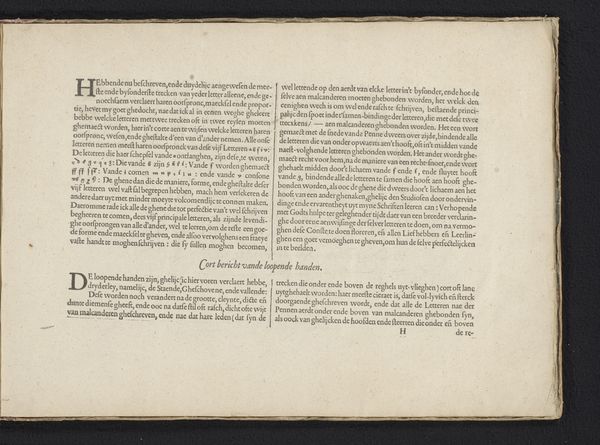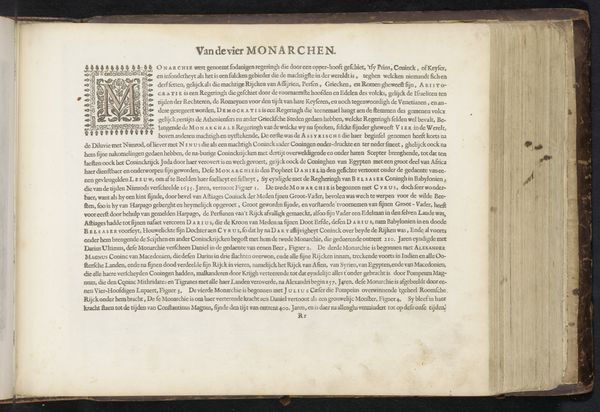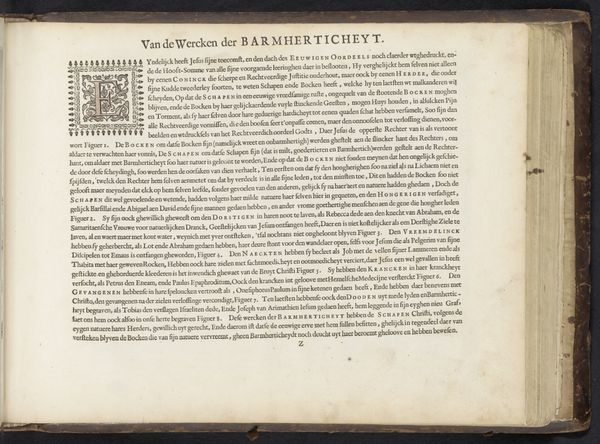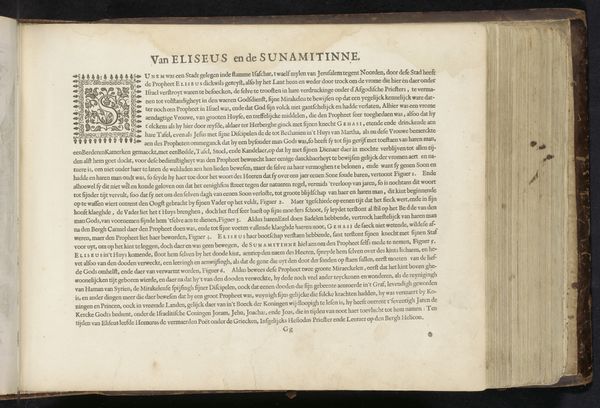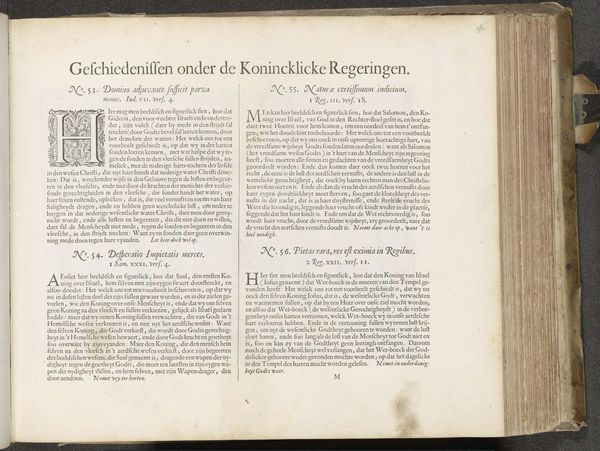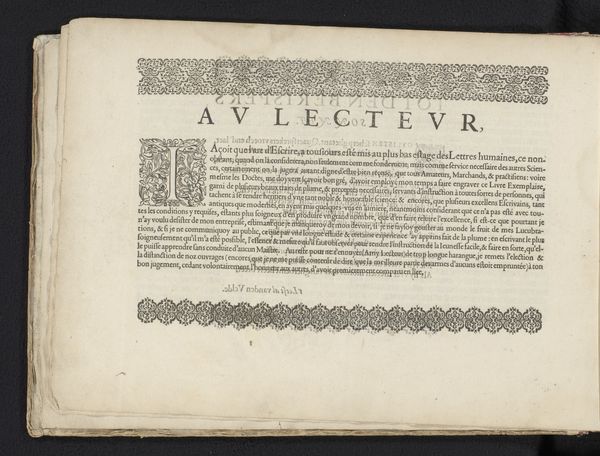
print, paper, engraving
# print
#
paper
#
coloured pencil
#
engraving
Dimensions: height 295 mm, width 370 mm
Copyright: Rijks Museum: Open Domain
Editor: So, this is "Inleiding op de twaalf Sibillen," made around 1653-1654 by Jan Philipsz Schabaelje. It's a print, an engraving on paper currently held at the Rijksmuseum. It really strikes me how much text is crammed onto the page! What grabs your attention in this piece? Curator: From a materialist perspective, it’s fascinating to consider the labor involved in producing these printed pages. Think about the engraver's skill in translating text and image onto a plate. How was this plate created and what processes where used for printing multiple copies, distributing religious and political propaganda and theological texts? Editor: That's a good point. I hadn't considered the physical work that goes into it. It makes me think about mass production. Curator: Precisely! The rise of printmaking allowed for wider dissemination of ideas. What kind of paper was it, how readily was this paper and ink source? This piece uses of printed text that also creates meaning. How do you think this work challenged the hierarchy between art and craft at the time? Editor: Well, if it were easily reproduced, would it have even been considered fine art? Was it challenging that notion, and how did that relate to labor conditions at the time? Curator: Exactly! By questioning its own mode of production and the consumption it engenders. These questions challenge notions surrounding what can be considered a work of “art,” or just simply work. Considering this period of increasing global trade in resources as well as labour, how could such piece of work be related? Editor: This is a completely different approach than I usually take, looking more at the social implications rather than the content on the page itself. It helps see the artwork's role as both an object and a piece of a larger production system. Curator: Indeed. By focusing on its materiality and means of production, we gain a much broader understanding of its historical and cultural significance.
Comments
No comments
Be the first to comment and join the conversation on the ultimate creative platform.
